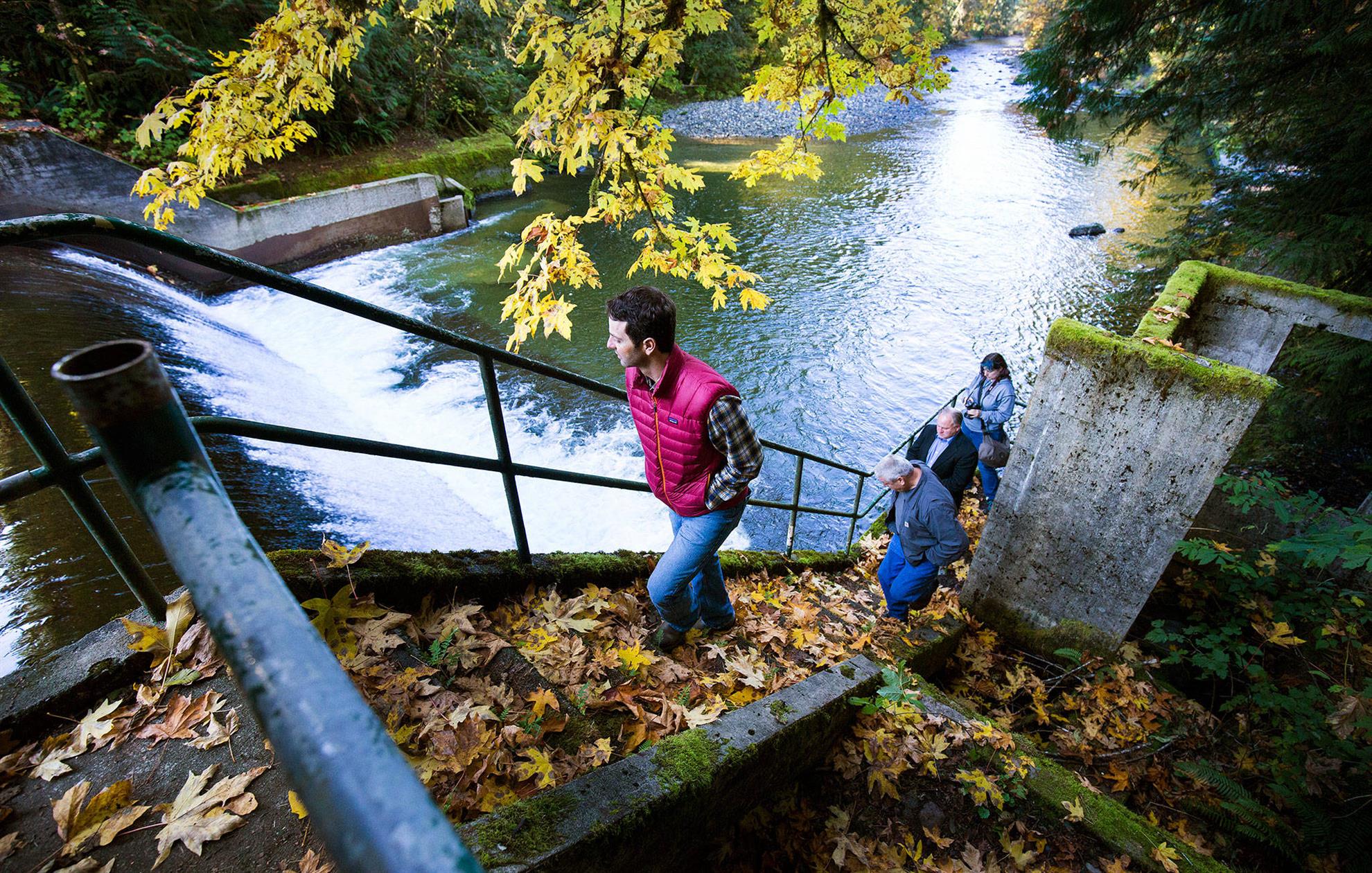
Brett Shattuck, Restoration Ecologist, The Tulalip Tribes viewing and surveying the Pilchuck Dam. The Pilchuck Dam Removal Restoration Project is a partnership between the Tulalip Tribes, NOAA, City of Snohomish, Salmon Recovery Funding Board, PSAR, Puget Sound Partnership, United States Environmental Protection Agency and the Paul G. Allen Foundation. As this article is being published, our current President Laurie Westover and her husband Mike will become our past President. Laurie and Mike live along the Pilchuck River adjacent to the dam and are fully supportive of the removal project.
What does this dam removal project involve: This is an outline of the project given by Brett at our Zoom meeting on Friday, June 26th. The outline consist of the Tulalip Tribes, watershed protection and restoration, the Pilchuck Dam Existing Conditions, Removal goals and objectives, the dam removal planning and outreach program.
The history of the Tulalip Tribes dates back in time to approximately 12,000 BC. In 1855, President James Buchanan signed the Treaty of Point Elliott which reserved the right to fish and hunt retained rights but that rights was not maintained. In 1970 the Boldt decision was both a momentous victory for Northwest Indians and a turning point in relations between Native Americans and the local government and non-Indian citizenry.
The Tulalip Tribes has an active Natural Resources Department which includes an Environmental Division which was created following the Boldt decision. The Department developed the Harvest Management Program. Small and large projects are under their domain. One project has a substantial cost upwards of $20 million dollars. The City of Snohomish owns the diversion structure which was previously operated for city drinking water withdrawals but is no longer in use as the City is now obtaining its water from the City of Everett water supply at Spada Lake
Declining fish and marine population along with the worst year on record for salmon decline have the partnership concerned with long-term salmon and fish population. Juvenile salmon survival is extremely important. The dam is barrier to iconic and culturally important fish species that live in the river including Chinook, Coho and Steelhead. Dam removal will restore 37 miles of additional river and tributary to their natural conditions with mutual benefits to fish, the Tulalip Tribes, the City of Snohomish and other stakeholders in the area. The cost of the dam removal is estimated to cost around $2 million which is a really good cost/benefit ratio. The project is expected to be completed this summer during the historically lowest water flows of the River.